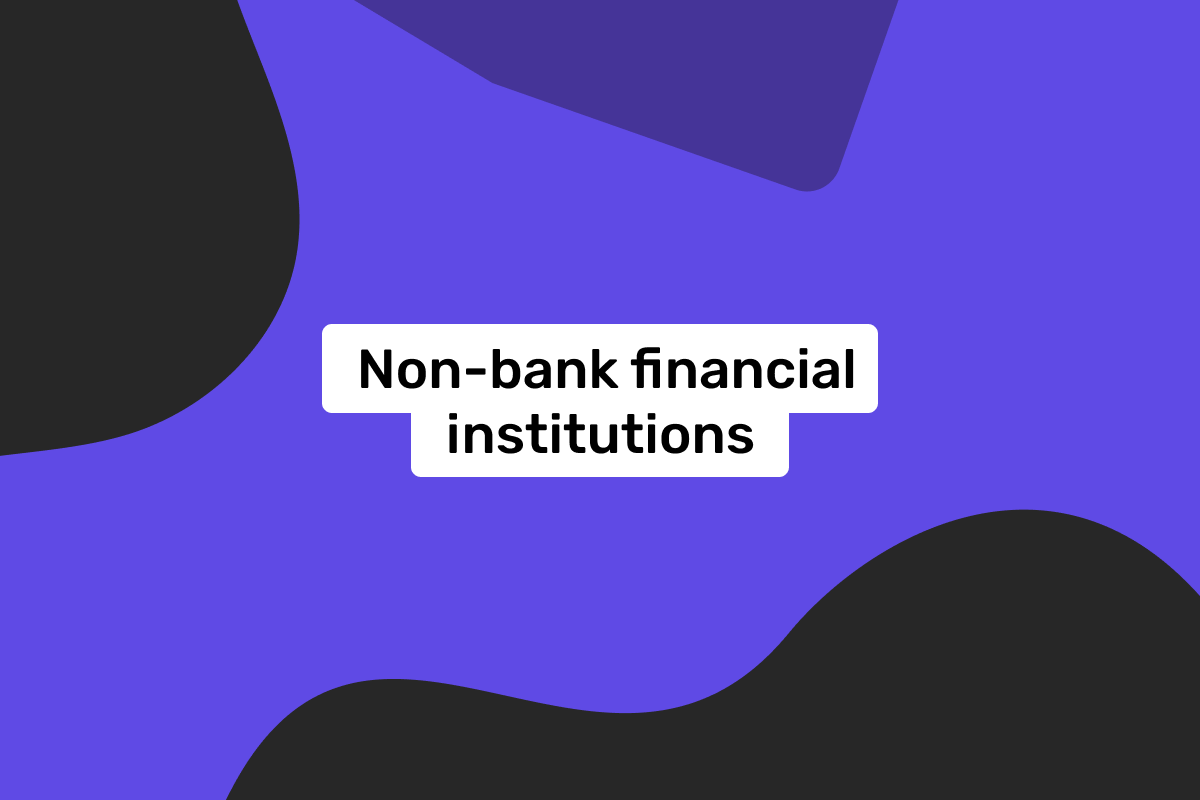Genome Blog / articles / What is a non-bank financial institution? Types of non-banks
Sep. 12, 2023
Surely, you know about banks: every decent-sized European city has at least one nowadays. Using a bank has become something as regular as going to the store.
But how about non-banks? The term may sound a bit confusing, as it doesn’t exactly tell us the purpose of such companies.
The Genome team is here to clear everything up! This article will explain how the non-banking companies work and differ from other financial institutions.
Non-banking financial companies: meaning of the term
First and foremost, let us finally explain what is meant when referring to non-banking financial institutions.
Non-bank financial institutions, also known as non-banking financial companies (NBFCs), are similar to traditional banks and payment providers, as they cover financial services for people and companies. However, there are notable differences in their operations and core functions.
These institutions don’t have banking licenses, which means they cannot provide checking or savings accounts. Instead, they focus on financial features such as lending, investment, and credits.
Thus, clients of non-banks should understand that they won’t get any of the traditional bank accounts. However, non-banking companies cater to more niche services and usually have many financial tools to offer on that front.
By the way, if you are looking for personal and business accounts, Genome can help! We are an electronic money institution that offers all these accounts and more! With us, you can experience seamless money transfers, order virtual and physical Visa cards, get multi-currency accounts, etc!
How do non-banking financial institutions differ from banks?
Before explaining the difference between non-banking and banking companies, a quick reminder that a financial institution is a company that offers various financial services, from account opening and card issuing to loans and mortgages.
However, the financial institution term encompasses many types of banks and payment providers. For instance, retail, commercial, insurance, investment, internet, central banks, credit unions, mortgage firms, savings and loan associations, etc.
Non-banks are also financial institutions and usually fall under the digital banking sub-category.
The main difference between banks and non-bank financial institutions lies in their regulatory framework and core features:
Brick-and-mortar banks are heavily regulated, while non-banking financial companies usually face less stringent regulations.
Non-banking financial companies do not offer traditional deposit tools like checking or savings accounts. Instead, they specialize in other, more niche financial activities such as lending, investment advisory, insurance, and short-term credits.
Types of non-banking financial institutions
Although non-banks lack many financial features and instruments common to your typical banks, they still encompass various financial businesses, each catering to the specific needs of customers. Some common types of non-banking companies include:
- Consumer finance companies. These non-banks provide loans to individuals for personal expenses, such as education, travel, or home improvement.
- Asset management companies. Such non-banking financial institutions manage investment portfolios on behalf of clients, helping them grow their wealth through various investment products.
- Housing finance companies. These non-banking companies focus on offering housing-related loans, including mortgages and home improvement loans.
- Microfinance institutions. Microfinance non-banking financial companies extend small loans to low-income individuals and entrepreneurs to support micro-enterprises and economic development.
- Risk pooling institutions. These non-banking organizations are used by people and entities that contribute to such institutions. The funds gathered are then used by members who have encountered losses or unexpected events. Examples of such non-banks include insurance companies, pension funds, and mutual funds.
Pros and cons of non-banking financial institutions
As with any financial provider, non-banking companies have a fair share of advantages and disadvantages. Let’s take a closer look.
The benefits of non-banking institutions:
Flexibility. Non-banks can adapt quickly to changing market conditions. Many of them operate online and thus can come up with innovative financial solutions.
Market diversity. They cater to underserved segments and usually have tools to offer when it comes to loans, mortgages, asset management, etc.
Competition. Non-banks promote competition in the financial sector as their products are more technologically driven than those of traditional banks. It, in turn, leads to better services and lower costs for clients.
The downsides of non-banks:
Regulatory challenges. As mentioned, non-banks don’t have banking licenses, and the lack of strict regulations can threaten financial stability.
Limited services. Unlike banks, non-bank financial institutions do not offer a full range of financial features.
Access to funds. Due to a lack of licenses and their services not being as encompassing, non-banking financial companies may face challenges raising funds compared to banks.
As you can see, while both banks and non-banking financial institutions play critical roles in the financial sector, the key differences effectively lie in core functions because they occupy different niches in the market.
FAQ
What are financial and non-bank financial institutions?
Financial institutions are organizations or entities that provide financial services to individuals, businesses, and governments. These services are a part of multiple financial activities, including banking, lending, investing, and insurance. Non-bank financial institutions are a subset of financial institutions that provide and specialize in services like lending, investment, insurance, and payment instruments but do not offer traditional banking services.
What are 4 types of financial institutions?
As we mentioned previously, financial institutions come in many forms and cater to different clients. However, we can still point out four main types of financial institutions, which are banks, credit unions, insurance companies, and non-bank financial institutions.
Banks are many: central, retail, commercial, internet, insurance, and investment ones. However, most of them provide multiple traditional financial services to individuals, companies, and merchants. These services typically include savings and checking accounts, loans, mortgages, credit cards, and various financial products.
Credit unions are member-owned financial cooperatives that offer similar services to commercial banks, such as savings and checking accounts, loans, and credit cards. However, these usually are nonprofit institutions and operate to benefit their members.
Insurance companies have various insurance products for people and businesses, providing protection against financial losses in exchange for premium payments. Insurance companies manage risk and provide financial security to policyholders.
Non-bank financial institutions are financial entities that provide a wide range of financial services but do not have a banking license. These institutions operate outside the traditional banking sector and have become increasingly significant in the modern financial landscape.
What is an example of a NBFC?
The most common examples of non-banking businesses are loan and mortgage firms and asset management companies.





